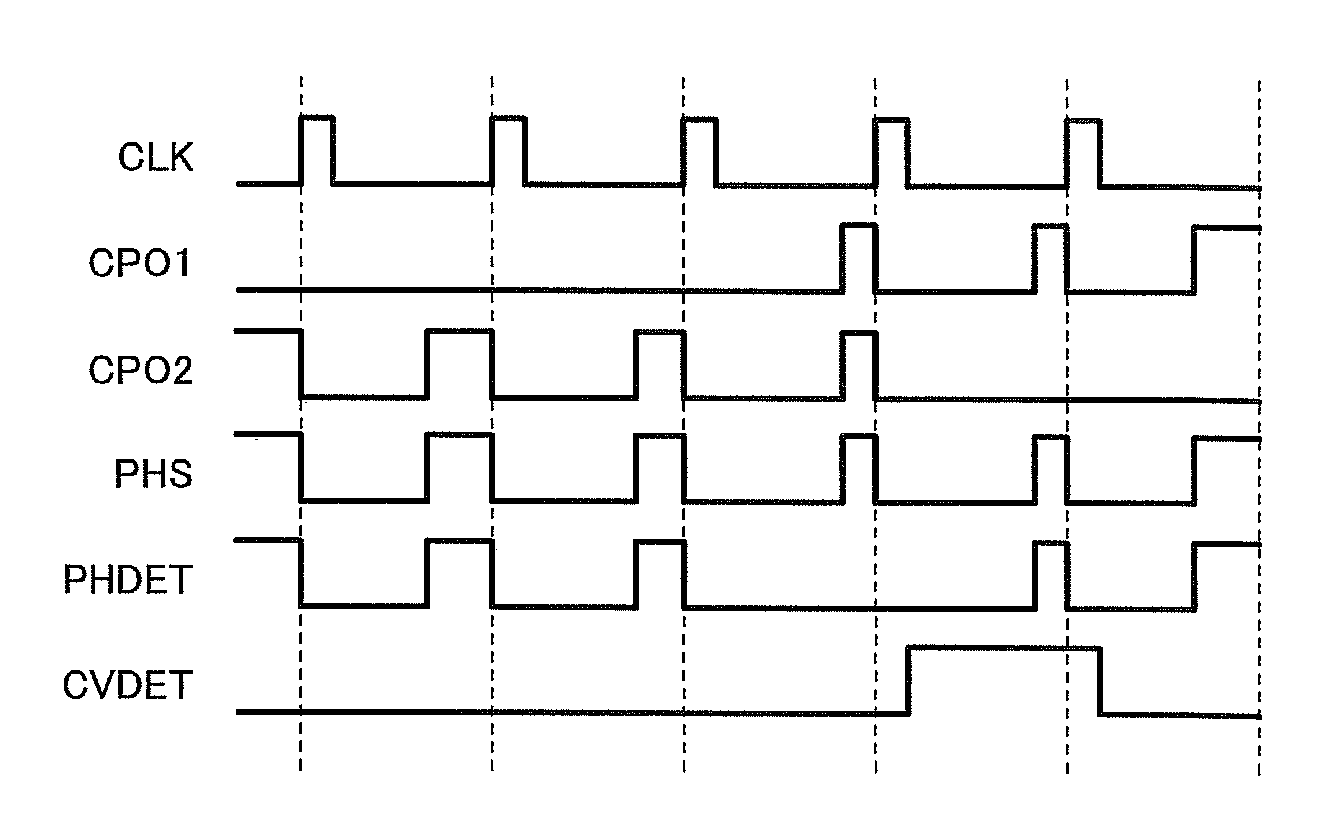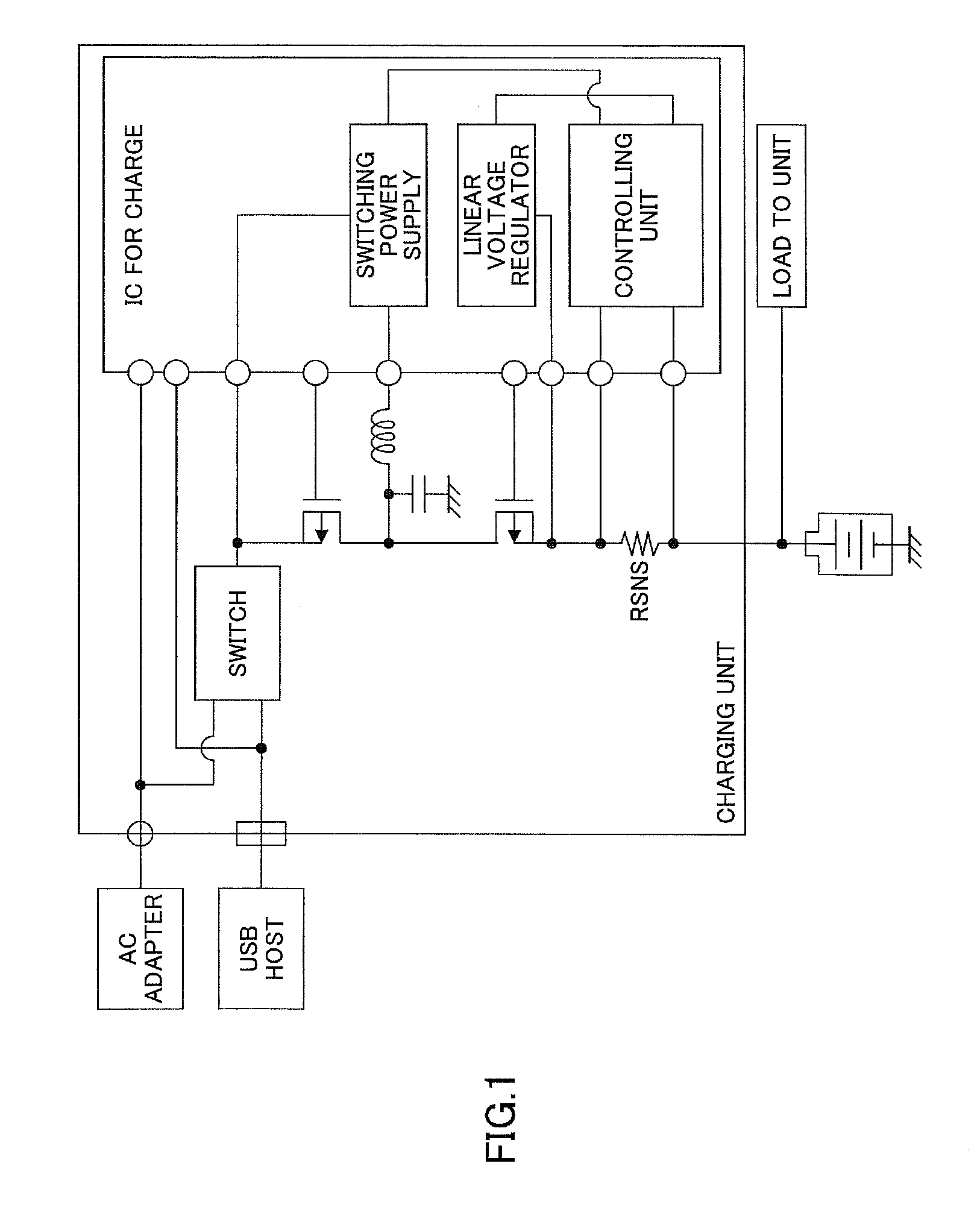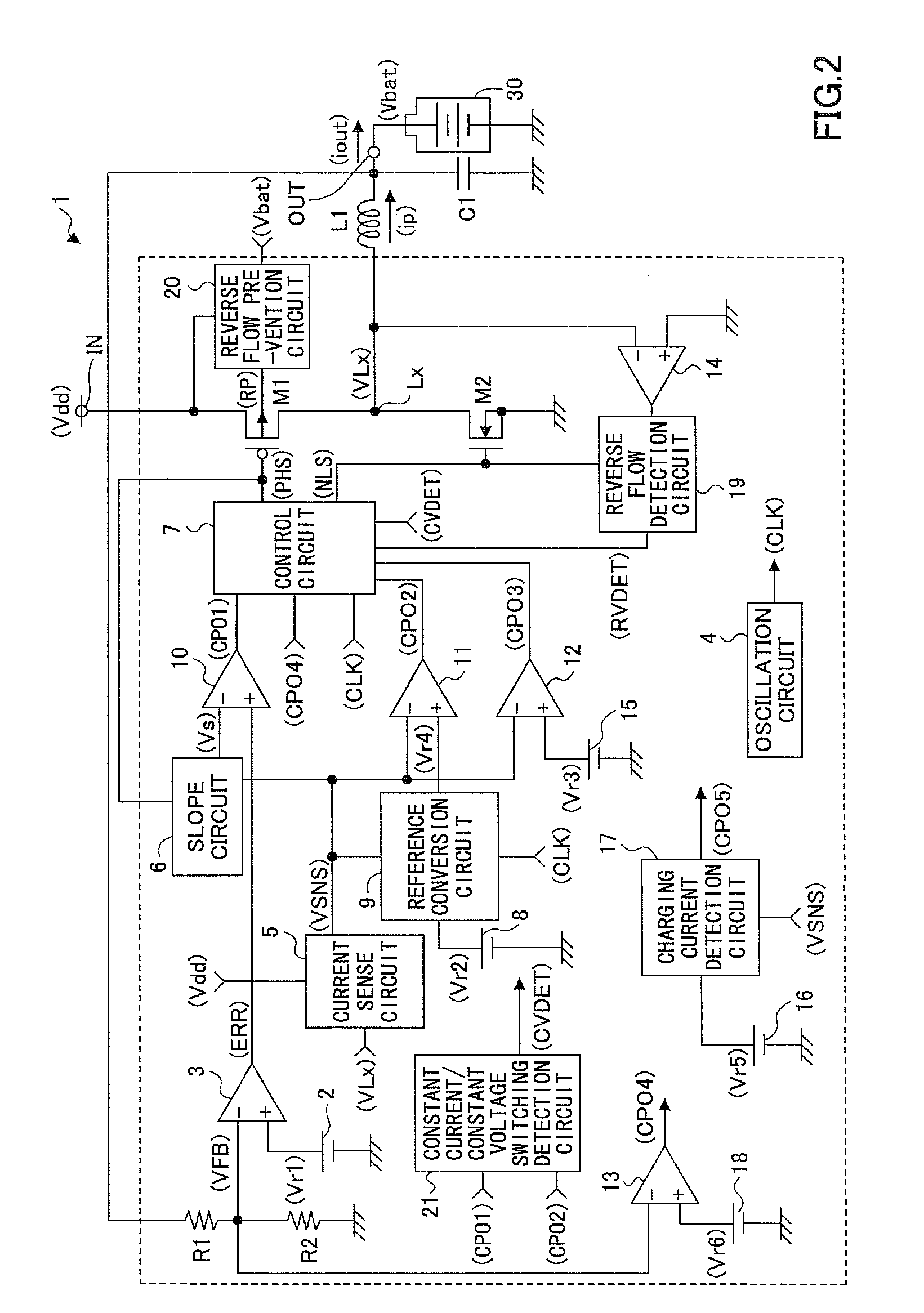Charge control circuit
a control circuit and circuit technology, applied in the direction of transportation and packaging, secondary cell servicing/maintenance, sustainable buildings, etc., to achieve the effect of reducing the number of parts, reducing power losses, and eliminating the occurrence of loss
- Summary
- Abstract
- Description
- Claims
- Application Information
AI Technical Summary
Benefits of technology
Problems solved by technology
Method used
Image
Examples
first embodiment
[0034]FIG. 2 is a diagram showing a circuit example of a charge control circuit according to a first embodiment of the present invention.
[0035]In FIG. 2, a charge control circuit 1 includes a non-insulated step-down switching regulator using an inductor and charges a secondary battery 30 connected to an output terminal OUT using a power supply voltage Vdd input to an input terminal IN from an AC adapter, etc., as a power supply.
[0036]The charge control circuit 1 has a switching transistor M1 composed of a PMOS transistor that performs a switching operation for the output control of the power supply voltage Vdd, a synchronous rectification transistor M2 composed of an NMOS transistor, an inductor L1, and a capacitor C1.
[0037]In addition, the charge control circuit 1 has a reference voltage generation circuit 2 that generates and outputs a first predetermined reference voltage Vr1, an error amplification circuit 3, an oscillation circuit 4 that generates and outputs a predetermined cl...
second embodiment
[0092]In the first embodiment, when the battery voltage Vbat is less than the sixth reference voltage Vr6, the constant current operation in the VFM control is performed using the signals CPO3 and RVDET. Alternatively, a constant current circuit that generates and outputs a predetermined constant current may be provided in the charge control circuit. According to a second embodiment of the present invention, when the battery voltage Vbat is less than the sixth reference voltage Vr6, the constant current circuit supplies a constant current to the secondary battery 30.
[0093]FIG. 9 is a diagram showing a circuit example of the charge control circuit according to the second embodiment of the present invention. Note that in FIG. 9 parts the same as or similar to those of FIG. 2 are denoted by the same reference numerals and a description thereof is omitted. Here, only differences between them are described.
[0094]FIG. 9 is different from FIG. 2 in that it eliminates the comparator 12 and ...
PUM
 Login to View More
Login to View More Abstract
Description
Claims
Application Information
 Login to View More
Login to View More - R&D
- Intellectual Property
- Life Sciences
- Materials
- Tech Scout
- Unparalleled Data Quality
- Higher Quality Content
- 60% Fewer Hallucinations
Browse by: Latest US Patents, China's latest patents, Technical Efficacy Thesaurus, Application Domain, Technology Topic, Popular Technical Reports.
© 2025 PatSnap. All rights reserved.Legal|Privacy policy|Modern Slavery Act Transparency Statement|Sitemap|About US| Contact US: help@patsnap.com



